


A horde swarms. Seeking and desperate. Shifting gradually, painstakingly forward like a colony of penguins, we bottleneck into the entrance of a sleek candy red temple. We can’t help ourselves, like flies to an electric zapper. Inside, the dizzying mix of red and white, polished chrome and teeth grins is overwhelming, unnatural, but oddly attractive. The aroma of griddled meat and vegetable oil creeps into our brains, easing the unrest and mutating confusion into pangs of hunger. A stillness arrests the crowd as trays piled high with food emerge from the kitchen—patties of seared meat, tomato, lettuce, smashed between two chalky buns and oozing with sweet, glossy ketchup. “The Original Hamburger,” the Overlord calls it. The grinning staff, as if anticipating a mob, abandon their posts to perform synchronized dances to upbeat Doo-Wop toons of repressed sexuality and innocent love, driving any doubt or dissatisfaction from our minds. Enthusiastic applause follows—it must if we are to receive the gifts of the Overlord. And, like the posters of gleeful white families looming over us, their deadened gaze, their demented joy, we too must smile. We must if we hope to experience the promise of what the Overlord calls “America.”
In this not so distant future, America is not a superpower, it is a feeling, a belief. America is happiness. America is bliss. America is simplicity and safety and escape. A rootless nostalgia—a yearning for that which one has neither had nor experienced. A hunger which can only be satisfied by one man. His name: Johnny Rockets.
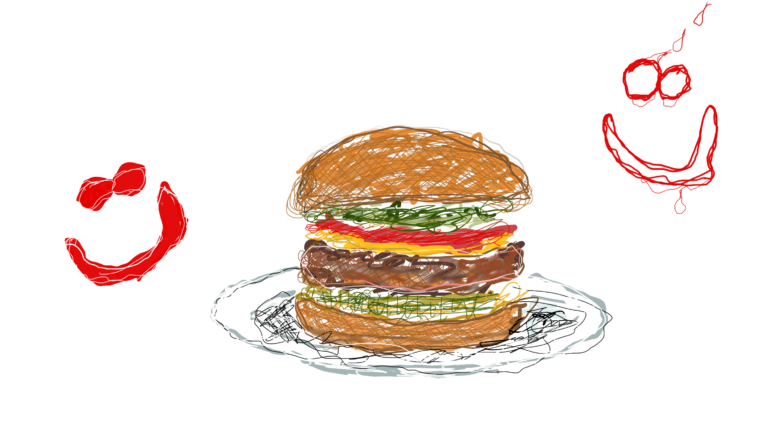
This dream, I am convinced is more prophecy than nightmare. I might sound like a doomsday nut, despite the tumultuous state of the country, to predict that in the next few centuries America could cease to exist—its legacy being the greatest failed experiment in the history of the world. As crazy as that might sound, if that were to come true, there will always be a need for the numbing properties of grease, meat and fat and no one does those better than Americans.
Juggernauts like Mcdonalds and KFC will, no doubt, be this bleak future’s purveyors of all-American comfort food. They are sure bets for the cockroaches of the culinary apocalypse. Don’t misunderstand, I’m not advocating against the hocking of sinew and chemicals as wholesome food. That battle, in my opinion, has been lost. Also, I do not have anything against burger and shake chains. Despite my personal complaints, I don’t mind In-N-Out and Shake Shack. My local chain, P. Terry’s, is a go-to for cheap comfort food and hangover relief. So then, what is bothering me? What makes Johnny Rockets so much worse?
Well, it’s not J.R.’s food, though, it should be mentioned that I have yet to encountered praise for any item on his menu the way I have for, say, Shake Shack’s concretes or In-N-Out’s animal-style Double-Double (and I’m willing to bet you haven’t either). Hell, I’ve never heard a damn thing about their food, good or bad, and that’s a huge red flag for me, since isn’t that why we go to restaurants, for the food?
No, instead what you hear about Johnny Rockets is the dance routines, the ketchup art, the gimmicky aesthetic, and the memorable origin story.

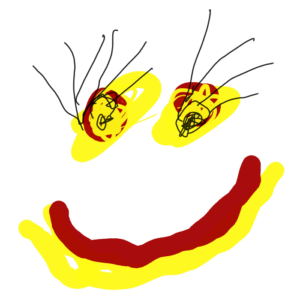


Entering a Johnny Rockets is like stepping into an exhibit at the Creation Museum. One of those life-sized dioramas portraying early Homo Sapiens’s peaceful existence with dinosaurs—hairy mannequins and saddle-wearing Triceratopses frozen in a plastic wilderness as wildlife noises are piped in the sound system.
Johnny attempts to recreate the “classic” American diner with glossy red vinyl seats, formica tables, chrome accents, checkerboard tile floors, table-top juke boxes and what I think they imagine is wholesome imagery, but looks more like propaganda. The staff at Johnny Rockets wear black bowties, red-trimmed soda jerk hats, and white shirts and aprons, so pristine you might question if they’ve even seen a fryer or a dishwasher. Their reimagining is less a diner and more sitcom set designed by Guy Fieri.
It might be a fun thing to visit ironically, right? To point and laugh at someone’s bizarre recreation of reality. That is until it becomes apparent that a good portion of the people around you aren’t pointing or snickering. There’s no joke here. No, they’re enjoying this twisted fantasy. They’re invested. Maybe they even believe. They want to believe.
And believing, in the case of Johnny Rockets, is an easy thing to do if you’re not asking questions. Take me for example. Well into my twenties I thought Johnny Rockets was one of the original diners/drive-ins streamlined, corporatized and franchised. Not because I was told that, but because it resembled what I’d seen in shows like Happy Days on Nick at Night. I didn’t question because, as far as I was concerned, the answer was there in front of me.
Little did I know the nickel juke boxes, the soda jerk uniforms, the malts, all the charming elements I thought were the last vestiges of the original joint, the only remnants prolonging the complete corporate sterilization, were actually by design. Rockets looked like those 50’s TV shows because it was supposed to. Everything you see, eat and endure at Rockets was the idea of one man, Ronn Teitelbaum.
The Hollywood mogul sold his fashion business and was looking for his next move. A middle-aged man, Ronn was feeling nostalgic. He yearned to recreate the post-war diners he loved in his youth. Odd thing was, these diners weren’t, for the most part gone. He was eating at them nightly to research food he wanted on his menu, going as far as to fish containers out of their dumpsters to see what brands they were using. For Ronn this wasn’t about having his own diner or even making a the best diner he could. It was about recapturing moments of his childhood and actualizing the nostalgic fantasies he had in his head. In other words, a midlife crisis.
Scrounging up table-top juke boxes, designing the gaudy interior and honing the recipes, was only the beginning. He needed a name. One that could evoke the bubble of post-war Americana he wanted to reimagine. It had to summon the loudest stereotypes of 50’s Americana—adoring white housewives with manicured bouffants, tail-fin luxury cars, blushing scamps drinking malted milkshakes, handsome greasers in leather jackets. Say anything you want about the restaurant or it’s food (and I will), the name does exactly what it should. Johnny Rockets conveys a time and a place and prepares you the same way Johnny Garlic’s California Pasta Grill clues you into what’s in store.




Maybe if J.R. had stayed at the original location on Melrose, if Ronn was still meticulously seasoning the beef and driving around L.A. on his Harley hunting for spindle mixer parts, we might be praising his loony persistence to this overblown imitation of a 50’s diner and maybe even the food. That is not, however, how things went. Where I, for instance, see classic diners as something to be admired, historical monuments holding the torch for a bygone era of American cuisine, Ronn saw franchise. Following the massive success of the original restaurant, multiple locations opened up over the next two years, including one in Tokyo. Now, the product of Ronn’s midlife crisis has mutated into an international brand that’s spread across the globe like HPV.
Stories of Ronn remain in the corporate rhetoric. Now that he’s dead, however, his life and these stories take on somewhat Orwellian undertones.
So, you’re telling me Ronn the 50-year-old fashion designer dug inside dumpsters to find the best brand of tuna? He fixed all those broken spindle mixers and juke boxes? And through all that he somehow choreographed those dance routines? Ok…but there’s no way he was the first to use a ketchup bottle as a microphone!
You better believe it and don’t forget who created the Original Hamburger©. You ask too many questions! Shut up and enjoy your condiment happy face and oh, look! The cooks are doing an impromptu Teitelbaum original dance to “Great Balls O’ Fire.”
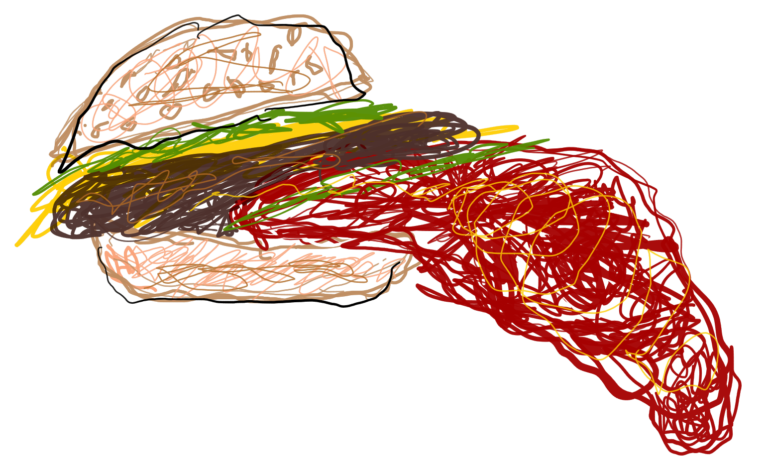
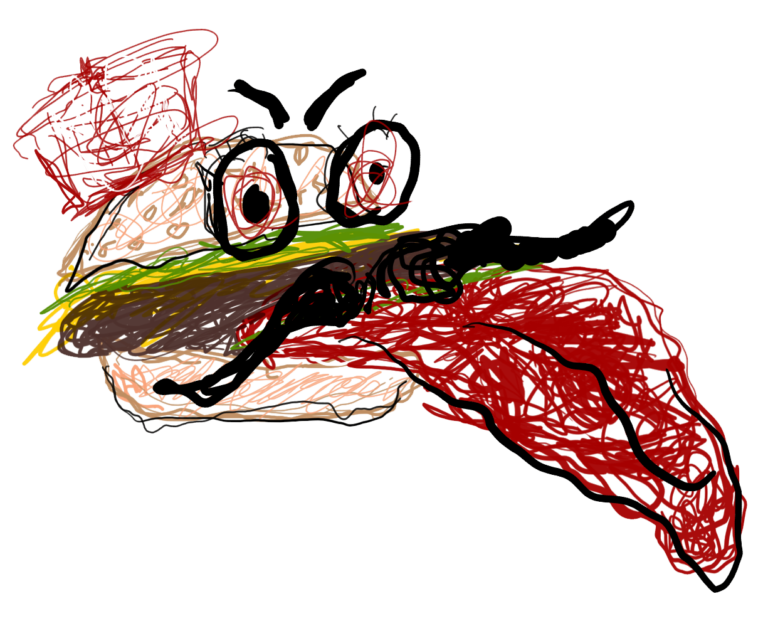


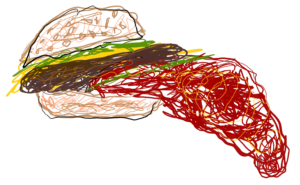
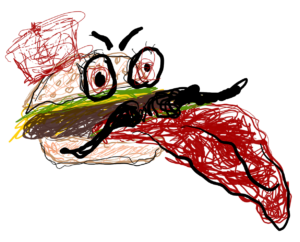
Unlike the Creation Museum, which has a minimal impact with its single location, Johnny Rockets has hundreds of locations and growing, spreading Ronn’s twisted vision to places like Dhaka, Bangladesh, Qingdan, China and East Java. They understand their appeal, too. Here we have the real thing. Overseas customers want the Americana they’ve seen on TV and in films and Johnny is more than pleased to provide the theme park.
The extinction of the American diner isn’t a personal, irrational fear. It’s an eventuality. These institutions are in a more precarious position than ever with growing health consciousness, aging regulars and younger customers who choose cleaner and, in their minds, safer corporate alternatives to the family-owned sources that inspired them. Numbers are already decreasing with the inflation of rent, urban renewal transforming whole communities and the next generation opting for tech jobs over restaurant work.
I’d like to think that the cultural and culinary history of these places will keep them alive and thriving. I’d like to think that the next generation of hipsters will be as passionate about preserving these institutions as they are about boutique coffee and farm-to-table. I’d like to think that in the age of food porn, when foodies want the “best,” the “authentic,” the “original,” they’ll won’t overlook the value of American diners. Sadly, though, I don’t see that happening and once these establishments are gone, so goes the history too. And, like Wal-Mart’s hit on mom and pop general stores, there’ll be only one game in town.
Yes, I’m being ridiculous. Yes, I know this is the nature of the world. And, yes, I am aware that immigrants to America have the same problem with so called “ethnic” chains that I’m expressing about J.R. Chinese people have to endure the twisted vision and cultural repercussions of the food and imagery put out by Panda Express and P.F. Changs. Mexicans, Taco Bell. Italians, Olive Garden. Australians, Outback Steakhouse. With J.R. it isn’t just about the food. They’re selling an experiential diorama, something that no other fast food joint or “ethnic” fast casual chain is offering, and they’re doing it so well I wouldn’t be surprised to read a Yelp review by a foreign tourist claiming L.A.’s famous Apple Pan “was not authentic.”
“Where are the family photos? Where’s the music? And why don’t the waiters dance? Or even smile??? They don’t even do plates!”
The depressing truth is that America’s classic diners will eventually be extinct and who will be there to keep their legacy alive? It won’t be museums and it won’t be the internet. That will go to the victor, Johnny Rockets. Post-war Americana will cease to be history and become novelty and, unfortunately, the generation that inherits that won’t know any different. I guess I should shut up and be happy that even if America were wiped off the map, just as hundreds of cultures and countries have before, at least we will have left behind the burger, the fry and the shake. In the grand scheme of shit, that’s as much as you could hope for. 
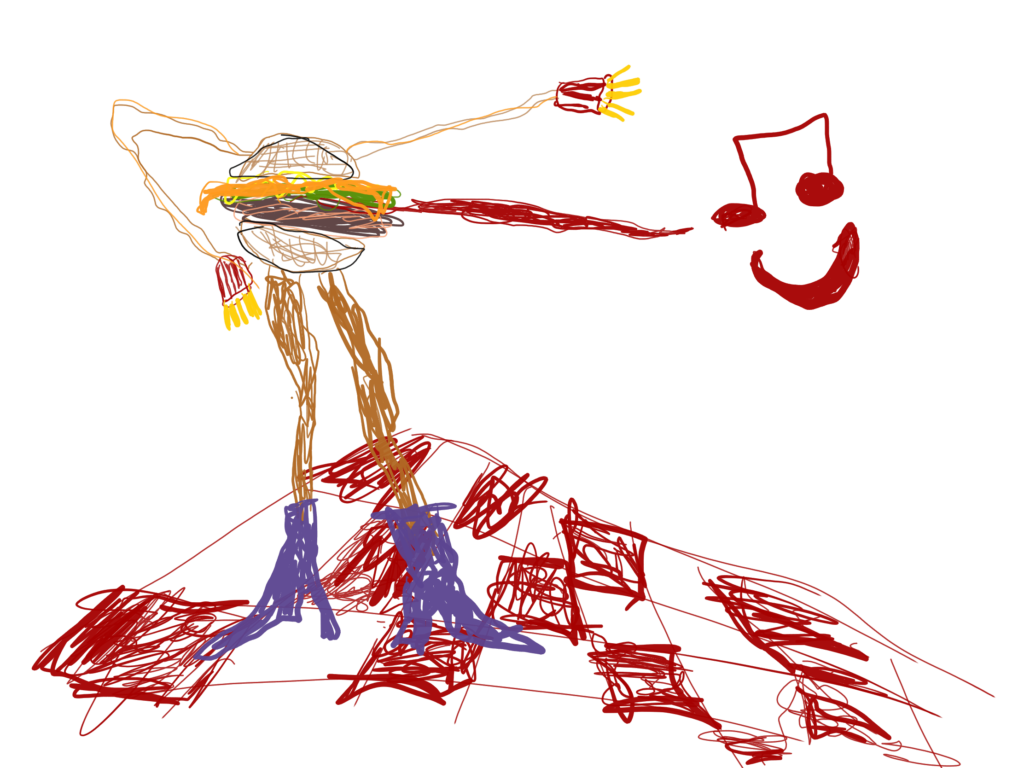
Contributors: Maddie Knight & Zakk Pollard